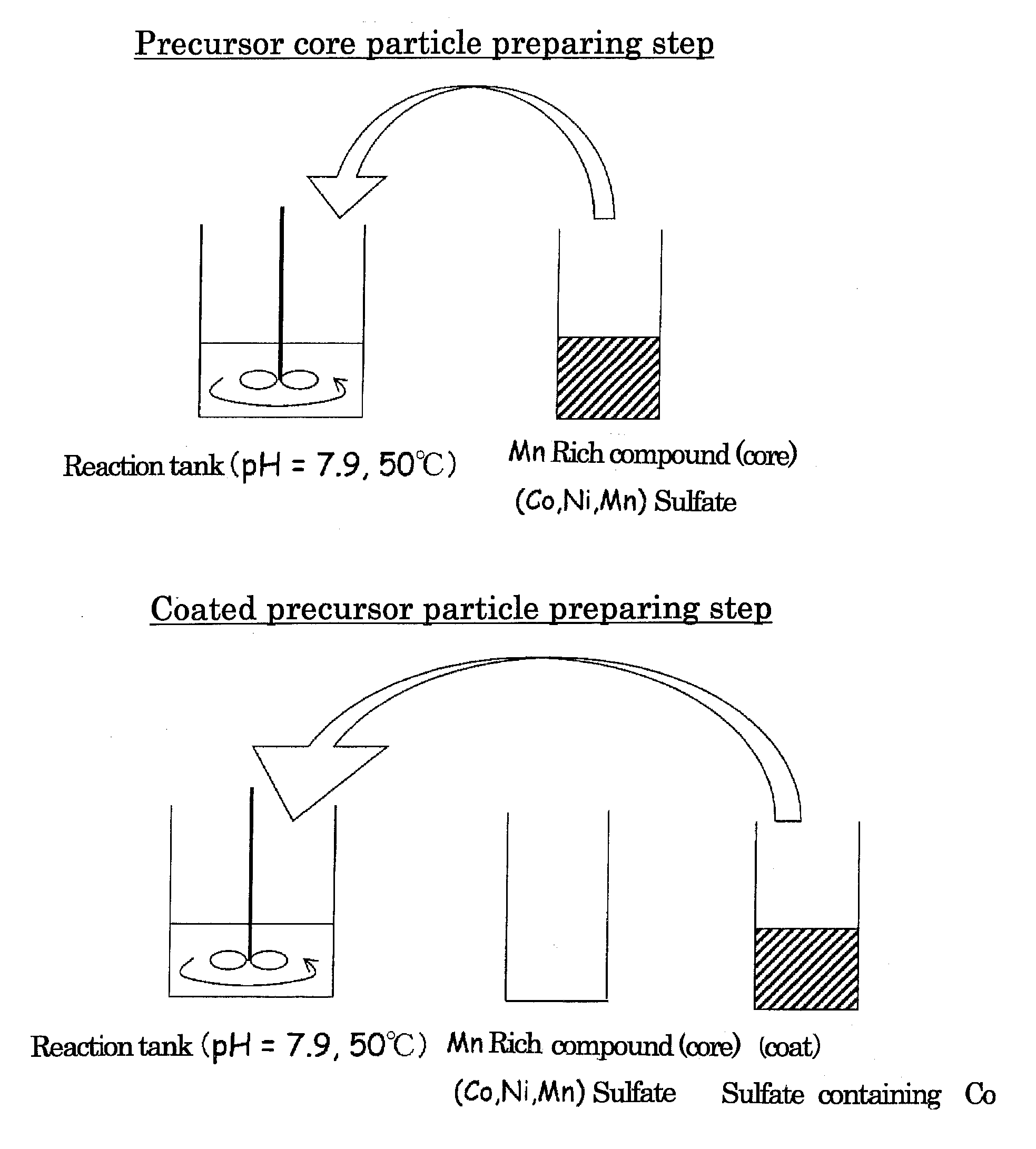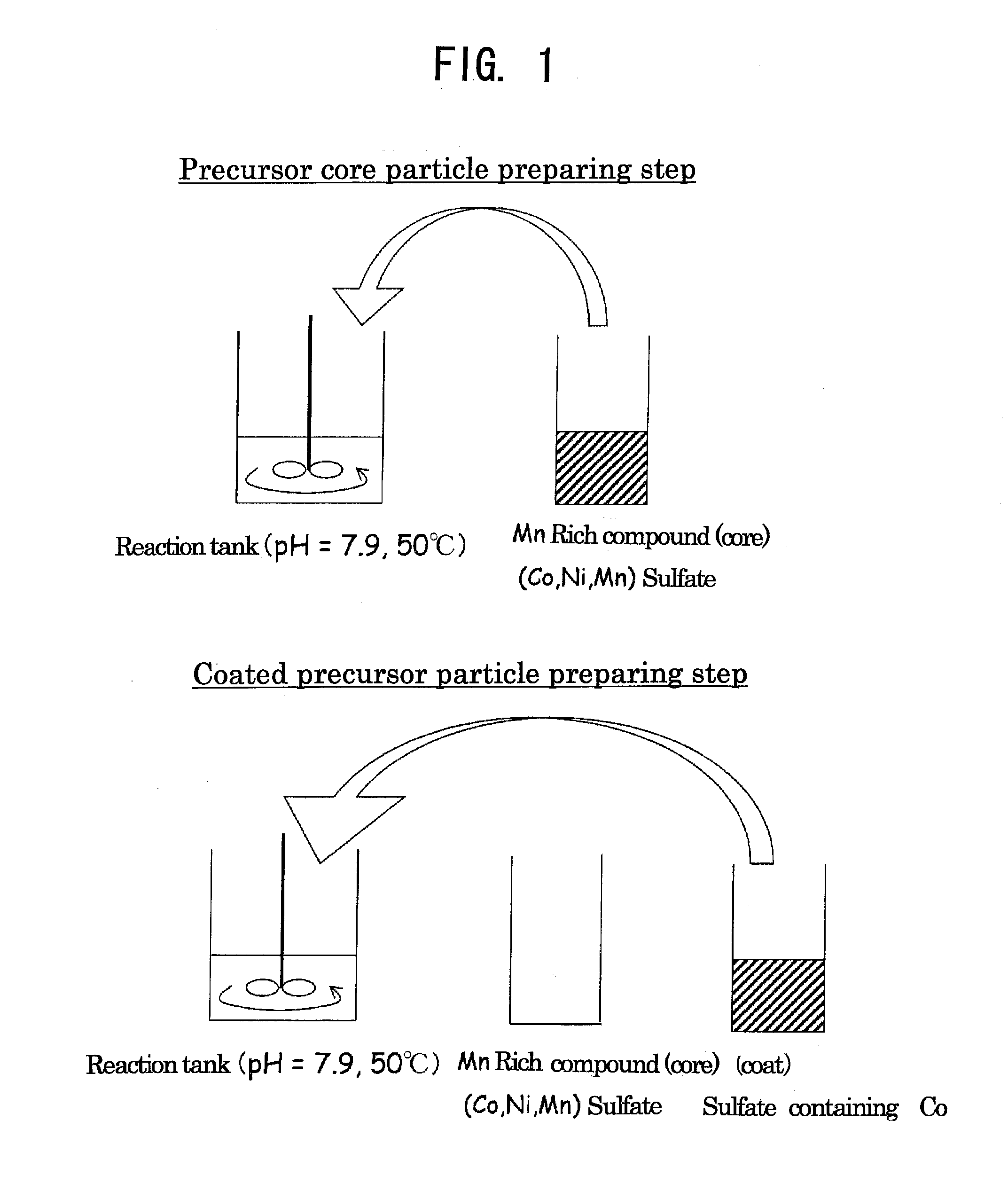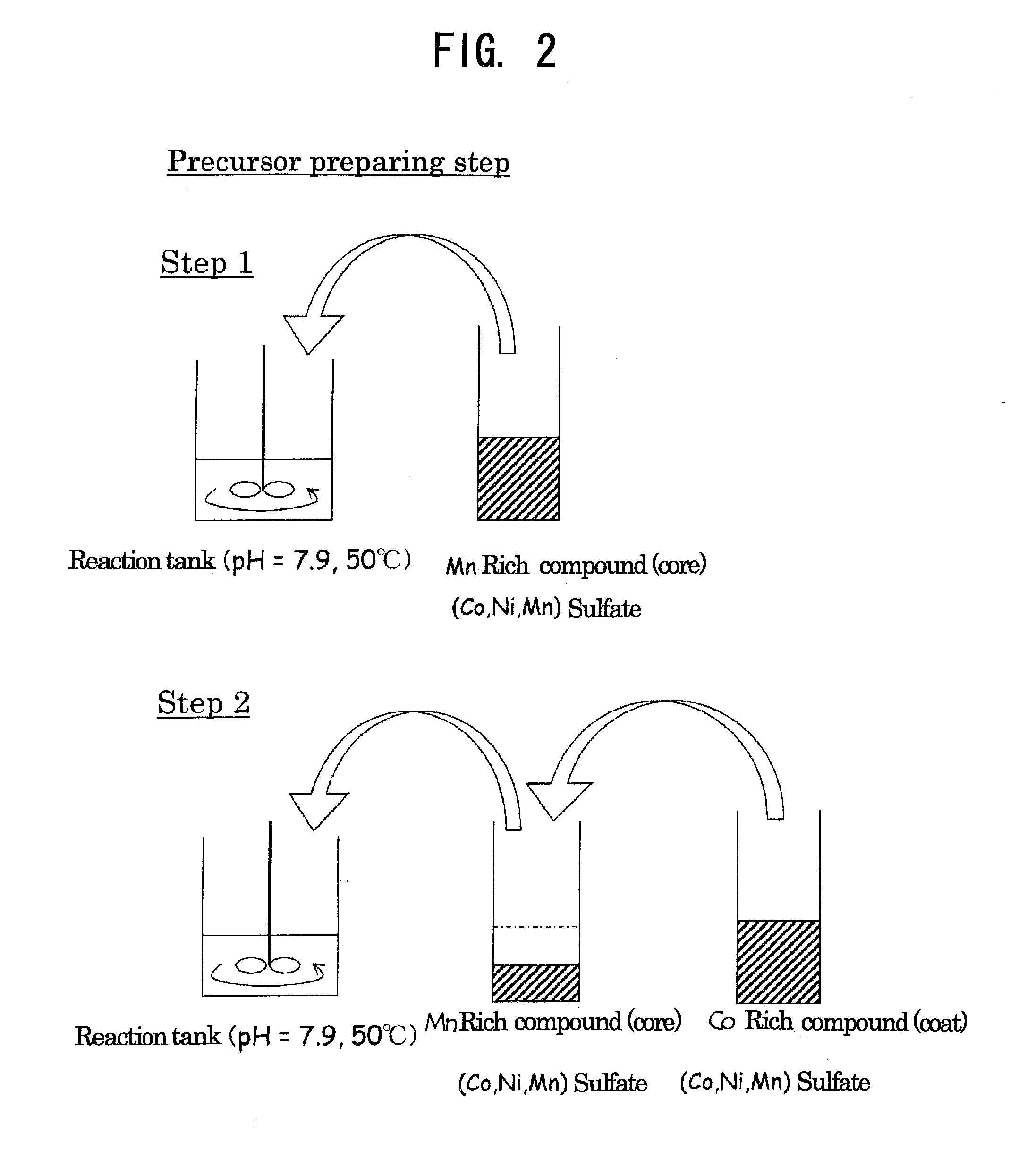Active material for nonaqueous electrolyte secondary battery, method for production of the active material, electrode for nonaqueous electrolyte secondary battery and nonaqueous electrolyte secondary battery
a nonaqueous electrolyte and active material technology, applied in the preparation of nickel compounds, cell components, nickel compounds, etc., can solve the problem of lithium-excess-type” positive active material not having sufficient high-rate discharge characteristics, and achieve high-rate discharge characteristics, excellent power characteristics, and high-rate discharge characteristics
- Summary
- Abstract
- Description
- Claims
- Application Information
AI Technical Summary
Benefits of technology
Problems solved by technology
Method used
Image
Examples
example 1
[0100]Concerning Example 1, examples of production of an active material for a nonaqueous electrolyte secondary battery by a method using precursor particles of a transition metal compound coated with a compound containing cobalt as Examples 1-1 to 1-5, a method using precursor particles of a transition metal compound coated with a compound containing cobalt and nickel as Example 1-6, and a method using precursor particles of a transition metal compound coated with a compound containing cobalt, nickel and manganese and containing cobalt in an amount larger than that of manganese in terms of a molar ratio as Example 1-7 will be shown below along with Comparative Examples.
example 1-1
Precursor Core Particle Preparing Step
[0101]Cobalt sulfate heptahydrate, nickel sulfate hexahydrate and manganese sulfate pentahydrate were dissolved in 200 ml of ion-exchanged water to prepare a 2.00 mol / l aqueous sulfate solution of which the molar ratio of Co:Ni:Mn was 12.5:19.94:67.56.
[0102]Ion-exchanged water (750 ml) was poured into a 2 L reaction tank, and a CO2 gas was bubbled for 30 min to thereby dissolve CO2 in ion-exchanged water. The temperature of the reaction tank was set at 50° C. (±2° C.), and the aqueous sulfate solution was added dropwise at a rate of 3 ml / min while the content in the reaction tank was stirred at a rotation speed of 700 rpm using a paddle impeller equipped with a stirring motor. Here, control was performed so that pH in the reaction tank was constantly kept at 7.9 (±0.05) by appropriately adding dropwise an aqueous solution containing a 2.00 mol / l aqueous sodium carbonate solution and 0.4 mol / l ammonia over a time period between the start and the ...
example 1-2
[0107]A lithium-transition metal composite oxide according to Example 1-2 was prepared in the same manner as in Example 1-1 except that the temperature was elevated from ordinary temperature to 850° C. over about 10 hours (temperature elevation rate of 85° C. / h), and the pellet was fired at 850° C. for 4 h in the firing step.
PUM
 Login to View More
Login to View More Abstract
Description
Claims
Application Information
 Login to View More
Login to View More - R&D
- Intellectual Property
- Life Sciences
- Materials
- Tech Scout
- Unparalleled Data Quality
- Higher Quality Content
- 60% Fewer Hallucinations
Browse by: Latest US Patents, China's latest patents, Technical Efficacy Thesaurus, Application Domain, Technology Topic, Popular Technical Reports.
© 2025 PatSnap. All rights reserved.Legal|Privacy policy|Modern Slavery Act Transparency Statement|Sitemap|About US| Contact US: help@patsnap.com



